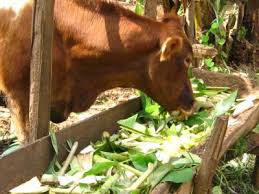Although the metabolism in biological systems is described as similar, some species have a particular diversity, which can add complexity to the metabolism. In all animals, macromolecules in food and feed items are digested into simpler compounds, which can be absorbed into the blood stream through the gastrointestinal tract.
This digestion occurs through fermentation, by microorganisms in the gut, by hydrolysis and enzymatic reactions. The ruminant is, however, unique in being highly specialized in terms of fermentation, which takes place in the rumen.
The latter acts as a batch fermenter and has been defined as an intact ecosystem comprising bacteria, protozoa and anaerobic fungi. In return for the appropriate conditions for survival, the microbial population assist in the digestion of fibrous feeds which would otherwise be underutilized, which is a classical example of a symbiotic relationship.
The environment in the rumen is reducing (the opposite of oxidizing). The gases above the rumen comprise 65% CO2, 27% methane, 7% nitrogen and 0.6% oxygen, while the fluid has a pH of 6–7 and a negative redox potential (Eh) of −250 mV.
In this environment, microbes have little oxygen and therefore any metabolism is limited; however, reductive processes are abundant, e.g. conversion of CO2 to CH4, and unsaturated acids are converted to saturated acids.
In the rumen, it is therefore possible that the pesticide may be chemically modified prior to being introduced into the gastric stomach.
Although the major organ of metabolism is the liver, the areas of administration of the pesticide also have significant metabolizing ability, i.e. the gastrointestinal tract (GIT) and the skin. In the GIT, the intestinal microflora operate in an oxygen-free environment which can favour reductive processes, e.g. reduction of a nitro moiety to an amine.
In contrast to the liver, which forms conjugates to assist elimination, the gut flora hydrolyse conjugates excreted in the bile such as glucuronides and sulfate esters.
For dermal applications, reactions include bacterial degradation on the skin surface and enzymatic reactions in the epidermis and dermis.
Read Also : Soil Fumigation, Importance and Types of Fumigation
The functions of the enzyme systems in the skin were reported as including all those found in the liver, including conjugating ability.
The qualitative and quantitative nature of the metabolism can be influenced by species, gender and dose rate, e.g. when tebufenozide was fed to rats, 4% of the 250 mg/kg single dose was metabolized, while about 46% of the 3 mg/kg dose could be metabolized
In many cases, however, an approximately proportional relationship was found between the dose rate and the level of residues.
In conclusion, the purpose of livestock metabolism studies is essentially to define the nature of the residues present in tissues, milk and eggs intended for human consumption. Additionally, the studies define the distribution of the residues in tissues and the validation of the efficiency of the extraction techniques used for residue analytical testing.
Studies are carried out with typical livestock species used in agricultural commerce and are required whenever a pesticide is applied directly to animals or when treated plant commodities are used for animal feed.

